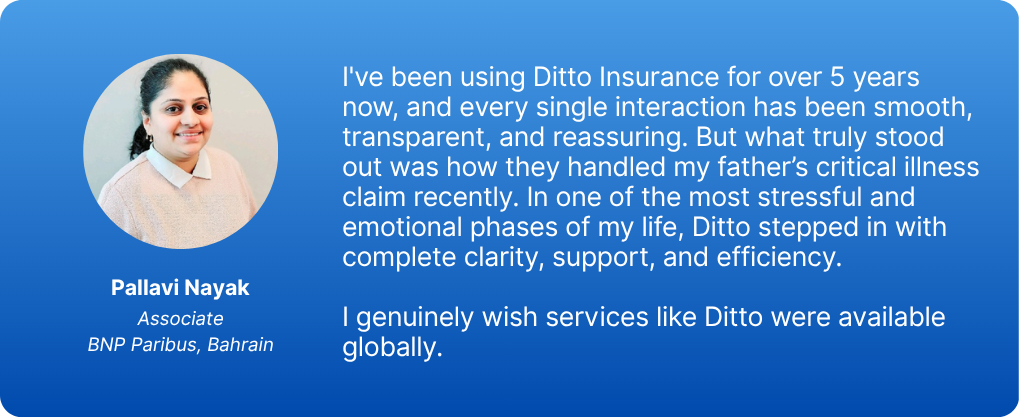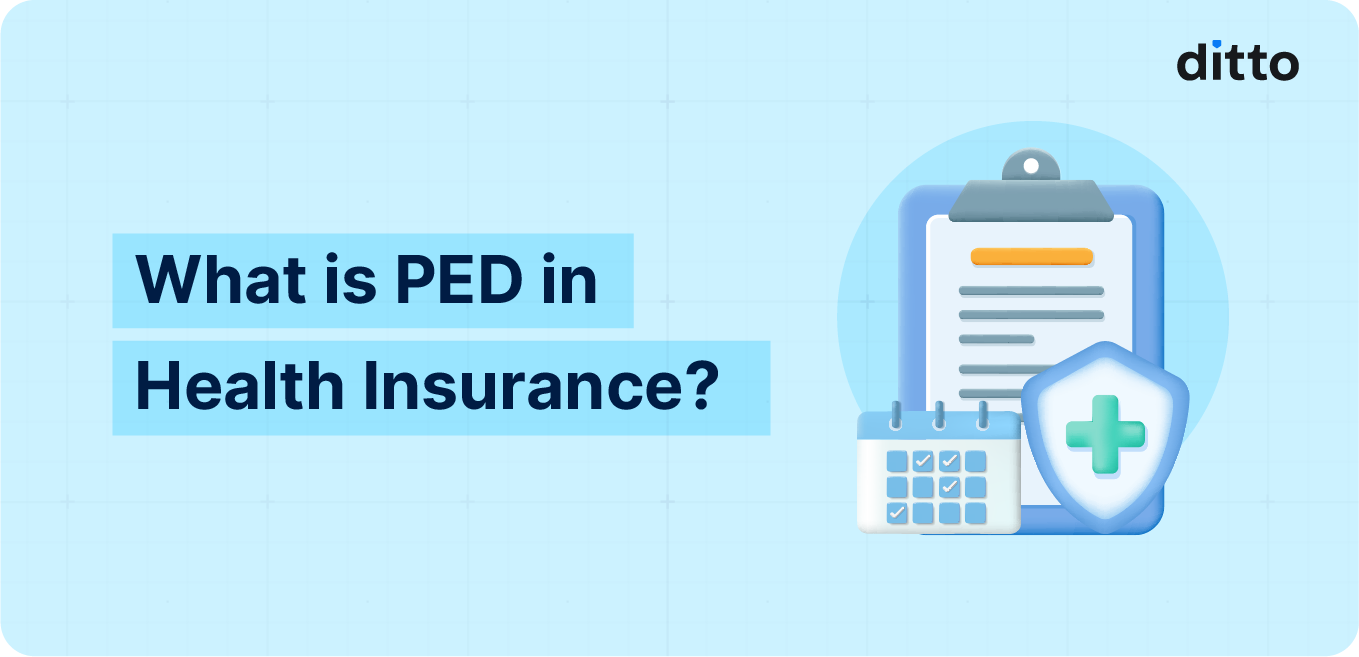Quick Overview
Reports suggest that about 41.73% of Indians aged 45 and above already have at least one chronic condition. This is concerning, as it increases insurers' risk, even for first-time buyers.
In many instances, this can lead to higher premiums, often without the buyer realizing the reason. However, there is good news: if you had a pre-existing disease before purchasing a policy, it won’t necessarily remain excluded forever.
In this article, we break down what PEDs mean for your health insurance, why proper disclosure matters, and how it can affect everything from your premium to your future claims.
What is PED in Health Insurance?
According to the Insurance Regulatory and Development Authority of India (IRDAI), a condition is classified as a Pre-Existing Disease (PED) if it was diagnosed by a physician or if medical advice or treatment was received for it within 36 months before the start of the health insurance policy or its reinstatement.
Simply put, if you already knew about a health issue that occurred within this duration before buying the policy, your insurer will treat it as a pre-existing disease.
Pro Tips:
- This look-back period was earlier 48 months, but IRDAI reduced it to 36 months, effective April 1, 2024.
- At Ditto, we’ve noticed that insurers don’t always limit their assessment to the 36-month window laid out by IRDAI. So, to ensure a smooth claims experience, we strongly recommend disclosing your full medical history to the best of your knowledge (not just what falls within the formal PED period).
- An undiagnosed PED doesn’t count as a PED, as per health insurance. However, insurers may still ask for your first consultation papers when you file a claim. So it’s always a good idea to keep those documents handy.

Why Do Insurers Care About Pre-Existing Diseases?
Risk Assessment
Health insurance works on risk sharing - many people pay in, and only a few make claims. Pre-existing diseases raise the chances of early and frequent claims since chronic conditions often need ongoing treatment. Covering these costs from day one makes expenses harder to predict, which is why insurers assess PED risk carefully to keep premiums sustainable.
Preventing Misuse (Adverse Selection)
Adverse selection happens when people buy insurance only after they fall sick, while healthier individuals opt out. This pushes up claim costs, forces insurers to raise premiums, and eventually drives healthy people away. Waiting periods encourage people to buy insurance early and stay covered long-term, keeping the risk pool stable for everyone.
Understanding the PED Waiting Period
The PED waiting period is a maximum of 3 years (2 years, in a few cases). It applies only if your policy is continuously renewed.
Any break in coverage can reset the waiting period. This also gives insurers time to collect some premiums before paying claims for pre-existing conditions.
Currently, several health insurance plans try to solve the long PED waiting problem in three ways:
- Disease-specific Reduction to 30 (or Zero) Days
‘ABCD Chronic Care’ add-on in HDFC Ergo Optima Secure can reduce PED waiting period for Asthma, Blood Pressure, Cholesterol and Type-2 Diabetes (with oral medication) from 3 years to 30 days. It has to be opted for the lifetime of the policy. - Generic PED reduction
‘Reduction in PED’ add-on in Care Supreme reduces the PED waiting period for any PED from 3 years to either 2 or 1 year, depending on the variant opted for. However, for specific illness conditions, there is a 2-year mandatory waiting period. It has to be opted for at least 3 years. - By Policy Design (Built into Base Plan)
HDFC Ergo Energy plan reduces the PED waiting period for Diabetes and under-control High Blood pressure from 2 years to 0 days, by default

How Do Pre-existing Diseases Affect Your Health Insurance?
Loading Charges
Based on the risk perceived due to a PED, Lifestyle habits, or an out-of-range Body Mass Index, most insurers can charge an extra premium of 10-40% (or more, depending on severity). This has to be paid for the policy’s lifetime.
Permanent Exclusions
Certain plans might ask for a PED to be permanently excluded from coverage if they feel that they’re taking too much risk. If done, the insurer will never pay for claims related to that specific condition. This is generally reserved for severe or high-risk PEDs like cancer or Rheumatoid Arthritis.
Alternative Products
For very severe PEDs, some insurers might choose to reject the application outright if they deem the risk too high to cover at all. Alternatively, they might offer a specialized product designed for high-risk individuals, though it may come with certain limitations.
Why is it Important to Disclose Pre-Existing Conditions?
It’s Mandated by Law
Your Policy Can Be Cancelled
Claims Can Be Rejected
It Keeps Premiums Fair
Why Choose Ditto for Health Insurance?
At Ditto, we’ve assisted over 8,00,000 customers with choosing the right insurance policy. Why customers like Pallavi below love us:

- No-Spam & No Salesmen
- Rated 4.9/5 on Google Reviews by 15,000+ happy customers
- Backed by Zerodha
- Dedicated Claim Support Team
- 100% Free Consultation
Confused about the right insurance? Speak to Ditto’s certified advisors for free, unbiased guidance. Book your call now, slots fill up fast!
Ditto’s Take on PEDs
With PEDs becoming more common even in younger people, insurers have realised the need for more specialized products to cater to this ever-growing segment. But keep in mind:
- Shorter is Better
The typical PED waiting period is 2-3 years. Always opt for a plan with the shortest possible waiting period for your specific PEDs. - Is it Worth It?
While some plans offer reduced waiting periods in exchange for higher premiums, these add-ons can be expensive and sometimes non-removable. See if a corporate or alternate plan can cover you during the waiting period and help keep premiums lower. - Read the Fine Print
Do not go by what’s advertised. Always check the policy document for hidden details on waiting periods and other terms and conditions. - Disclose Everything
Always disclose the full extent of your medical history to the best of your knowledge to avoid any sudden surprises in the future.
Frequently Asked Questions
Last updated on:










